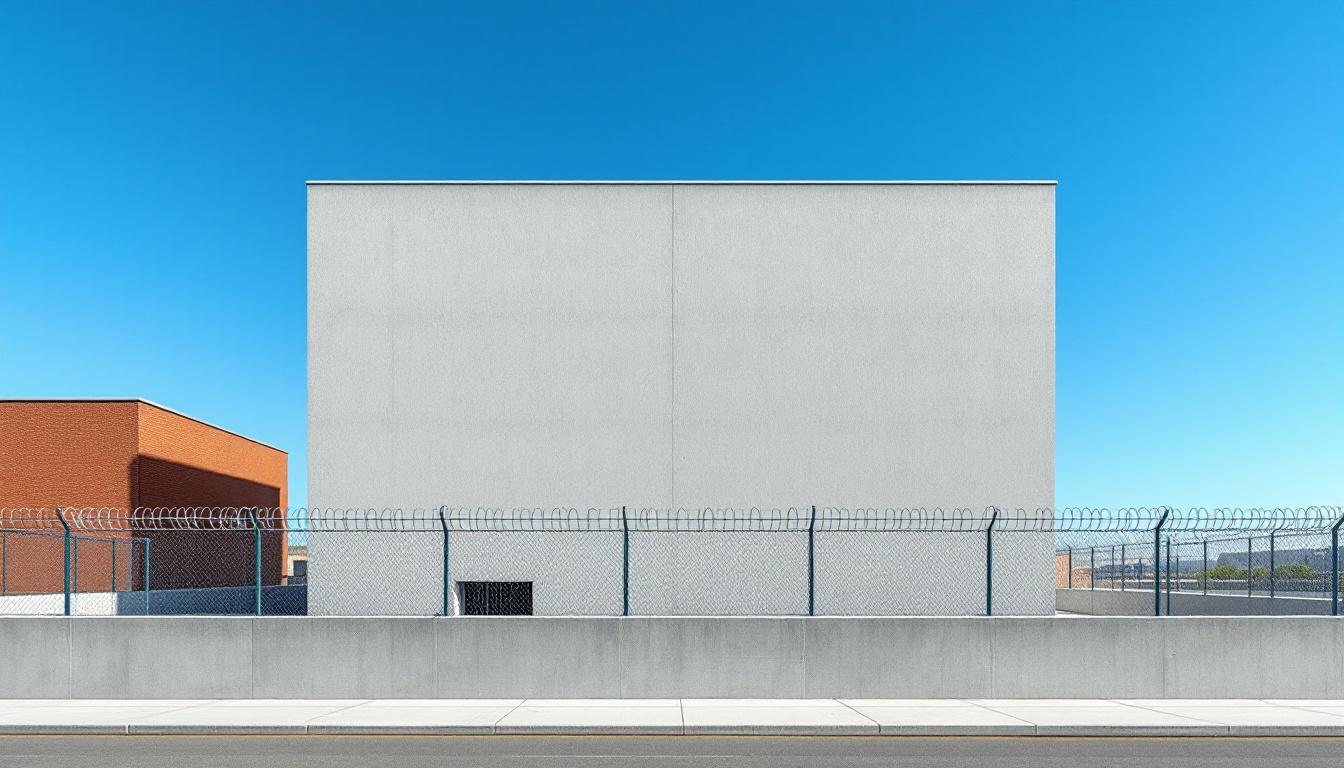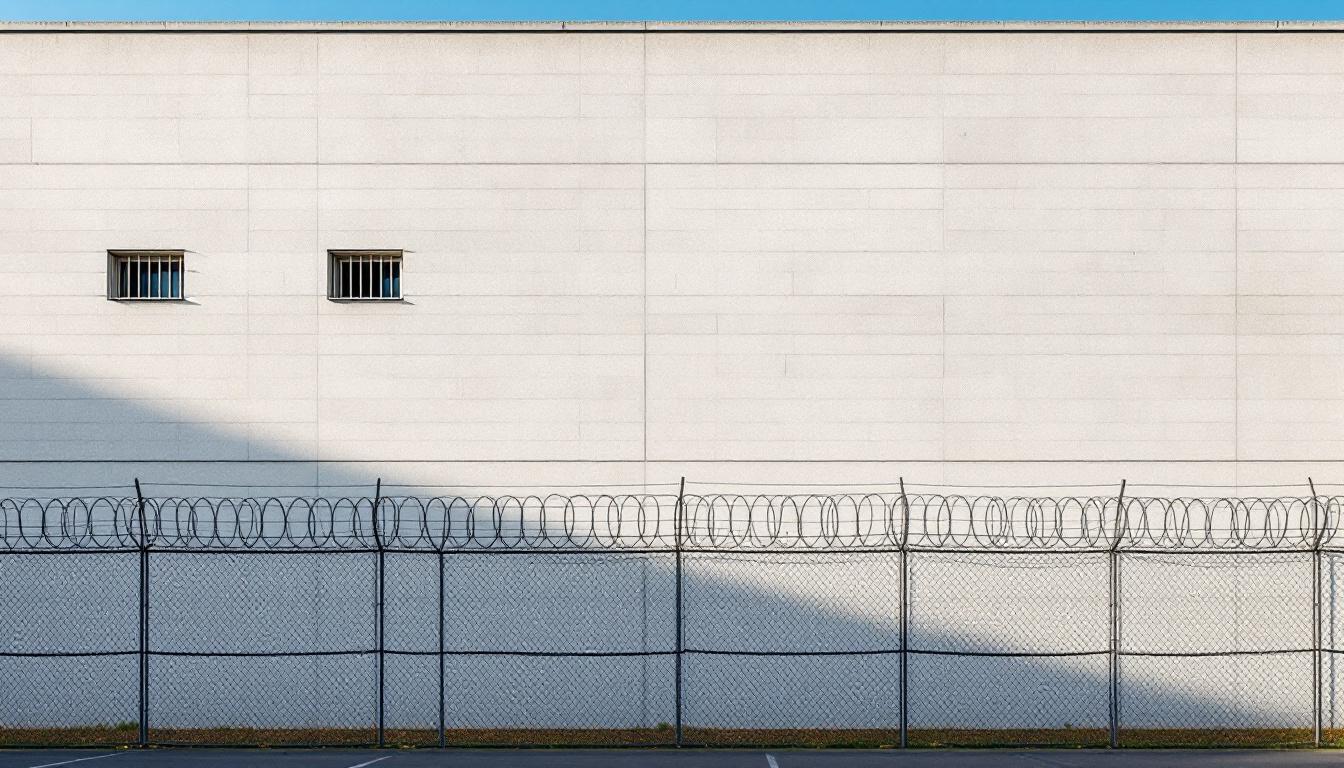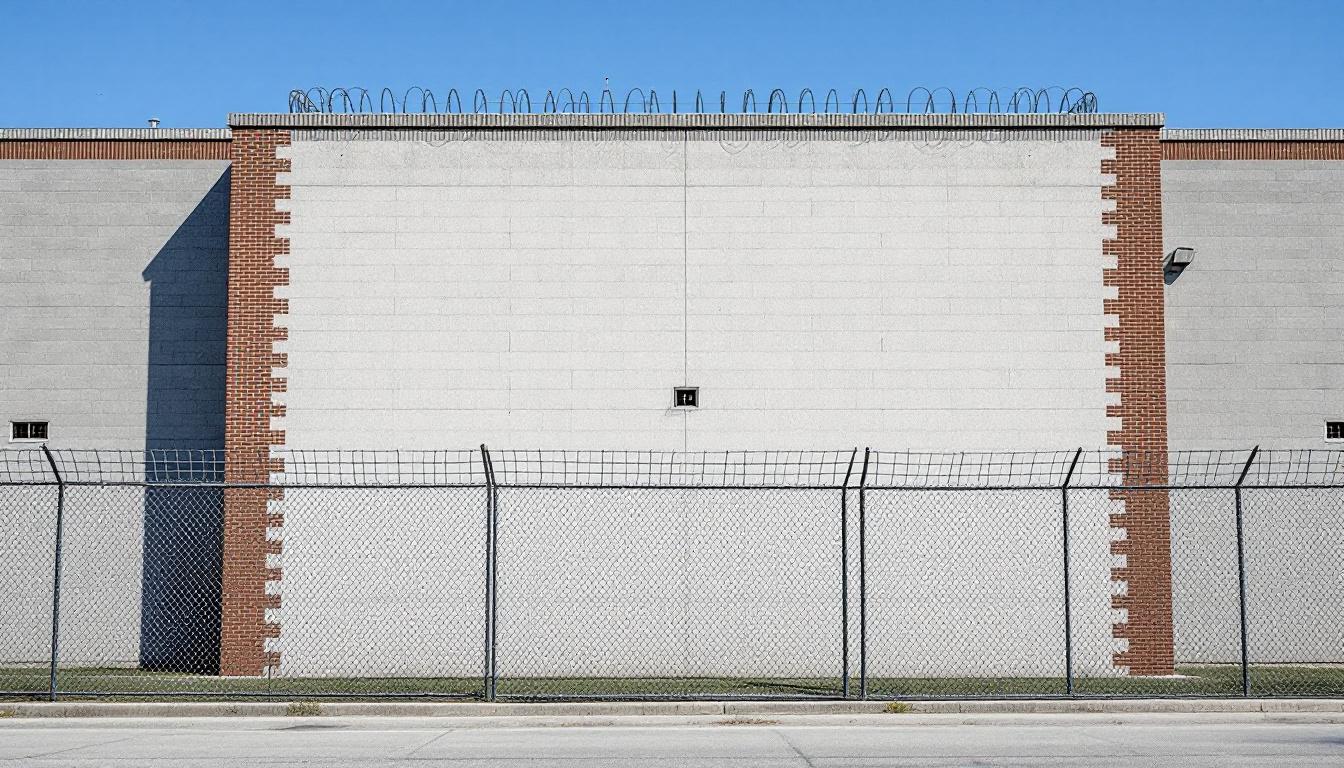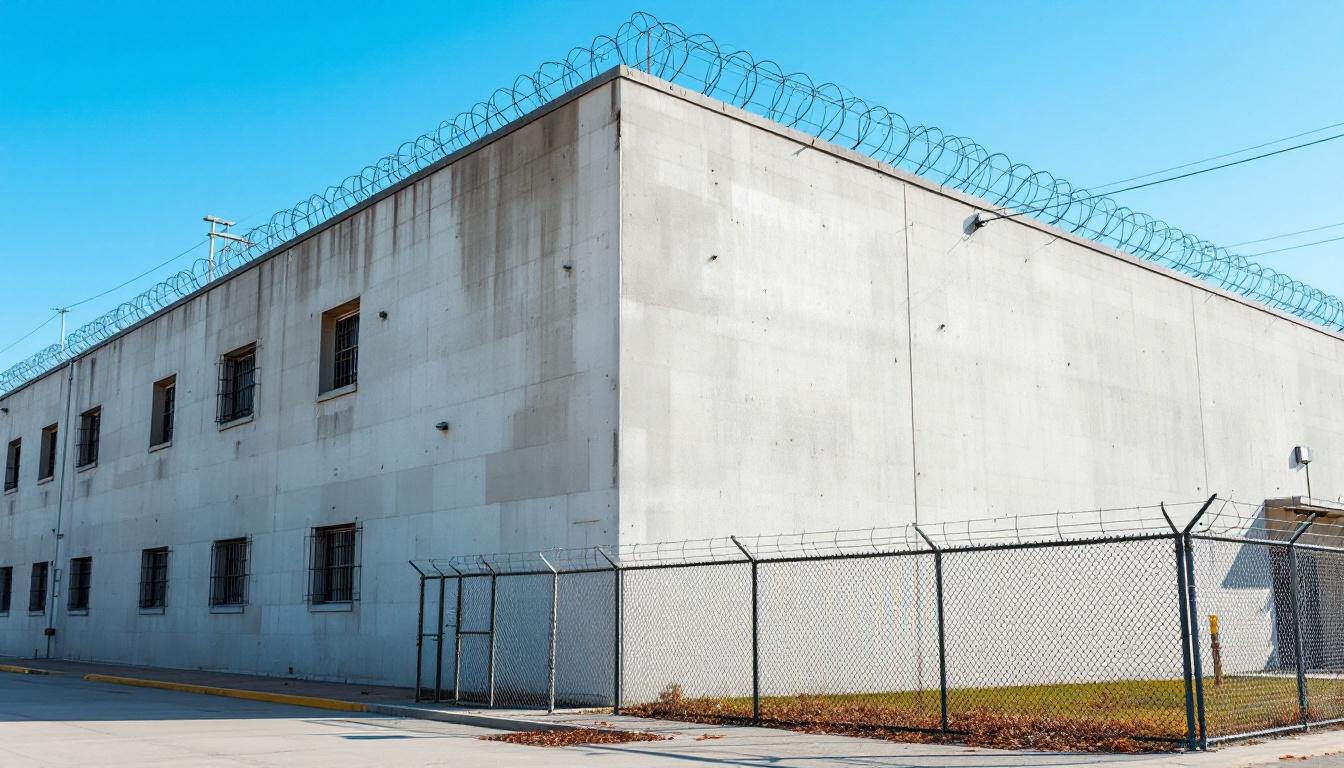
Quick Navigation
How to contact an inmate at Patuxent Institution
This comprehensive guide will walk you through how to connect with an inmate at Patuxent Institution. Follow the steps below to find an inmate and send letters and photos:
- Search for the inmate using our search tool below
- Create your account or log in to Penmate
- Write your message (up to 6,000 characters)
- Send instantly - inmates receive printed copies daily
Find an Inmate
Search for an inmate to start communicating today
Tip: You can search by first name, last name, or inmate ID number
To contact a person at Patuxent Institution start by searching for the person on the official facility website. Perform a search by following these steps:
- Step 1: Enter their first name and last name into the search form and click "Search"
- Step 2: Locate their inmate record
- Step 3: Write down their Inmate ID and any housing information provided
Important! Be sure to enter the person's full name. Nicknames should not be used.
How to Send Messages to Inmates

You can use your phone or computer to send emails, letters, and photos to an inmate. Messages are sent electronically to inmate tablets or kiosks at the facility. If you would like to send a message, start by searching for an inmate at Patuxent Institution.
Sending Photos and Postcards

A great way to send love and support to a loved one at Patuxent Institution is to send photos and postcards. It only takes a few minutes to send photos from your phone and it makes a huge difference. You can also mail postcards with words of support and inspiration, or design your own postcard for special moments like birthdays and holidays.
Important! Be sure not to send any explicit photos or they may not be approved by the facility. You can also use a photo printing app like Penmate to make sure your photos are printed at the correct size (4x6 or 3x5) and are mailed according to the rules and regulations of Patuxent Institution.
Frequently asked questions about Patuxent Institution
-
How long does it take to deliver a message?
If you're sending an email message your letter is usually delivered within 24-48 hours. For messages sent via mail you should expect delivery within 3-7 days. All messages will need be approved by Patuxent Institution.
-
How much does it cost to send a message to Patuxent Institution?
You can send a message free using your phone or mail a message via USPS for the price of a $0.60 stamp and envelope. You can also purchase credits or e-stamps from services starting at $1.99.
-
What services can I use to contact an inmate at Patuxent Institution?
Penmate
You can use Penmate to send letters and photos to an inmate from your phone. It's an easy way to stay in touch during your loved one's incarceration. Use the inmate locator to find an inmate's location and contact information, then you can send messages within a few minutes.
Securus messaging
Securus may be another option for communicating with an inmate at Patuxent Institution. You can create a friends and family account and purchase credits to send messages. All messages will be reviewed and must be approved by the facility.
JPay
Some county jails and state prisons may support sending messages with JPay. You must register an account with the system, find your loved one, and purchase stamps to send messages. For some locations you can also attach photos.
Smart Jail Mail
You may also check if Smart Jail Mail is available at Patuxent Institution. Smart Jail Mail is operated by Smart Communications and has contracted with some state and county jails. After purchasing credits, your messages and photos are sent to the facility, printed out, and then handed out to your loved one.
-
What is the mailing address of Patuxent Institution?
Mailing address:
Patuxent Institution
7555 Waterloo Rd
Jessup, MD 20794
Phone: (410) 799-3400Business hours:
- Monday: Open 24 hours
- Tuesday: Open 24 hours
- Wednesday: Open 24 hours
- Thursday: Open 24 hours
- Friday: Open 24 hours
- Saturday: Open 24 hours
- Sunday: Open 24 hours
-
What are the visiting hours at Patuxent Institution?
Visiting hours at Patuxent Institution vary by housing unit and security level. Generally, visits are scheduled on weekends and holidays, with some facilities offering weekday visits. Contact the facility directly at (410) 799-3400 or check their website for the current visiting schedule. Visits typically last 30-60 minutes and must be scheduled in advance.
-
What items are prohibited when sending mail to Patuxent Institution?
Prohibited items typically include: cash, personal checks, stamps, stickers, glitter, glue, tape, staples, paperclips, polaroid photos, musical or blank greeting cards, hardcover books, magazines with staples, and any items containing metal or electronics. Only send letters on plain white paper with blue or black ink. Photos must be printed on regular photo paper (no Polaroids). Always check with Patuxent Institution for their specific mail policies.
-
How do I send money to an inmate at Patuxent Institution?
You can send money to an inmate at Patuxent Institution through several methods: 1) Online using JPay, Access Corrections, or the facility's approved vendor, 2) Money orders mailed directly to the facility with the inmate's name and ID number, 3) Kiosks located in the facility lobby, or 4) Over the phone using a credit or debit card. Fees vary by method, typically ranging from $2.95 to $11.95 per transaction.
-
Can I schedule a video visit with an inmate at Patuxent Institution?
Many facilities now offer video visitation as an alternative to in-person visits. At Patuxent Institution, video visits may be available through services like Penmate, Securus Video Connect, GTL, or ICSolutions. Video visits typically cost $10-20 for 20-30 minutes and must be scheduled in advance. You'll need a computer or smartphone with a camera and reliable internet connection. Contact the facility for their specific video visitation policies and approved vendors.
-
What identification do I need to visit an inmate at Patuxent Institution?
All visitors must present valid government-issued photo identification such as a driver's license, state ID, passport, or military ID. Minors must be accompanied by a parent or legal guardian who can provide the minor's birth certificate. Some facilities require visitors to be on the inmate's approved visitation list, which may require a background check. Contact Patuxent Institution for specific ID requirements and visitor approval procedures.
-
How can I find out an inmate's release date?
To find an inmate's release date at Patuxent Institution, you can: 1) Use the online inmate search tool if available, 2) Call the facility's records department, 3) Contact the inmate's case manager or counselor, or 4) Have the inmate provide this information during a call or visit. For privacy reasons, some facilities only release this information to immediate family members.
Facility Overview
Official Website

About Patuxent Institution
Nestled within the greater Baltimore-Washington corridor, Jessup, Maryland serves as home to Patuxent Correctional Institute, an MD correctional facility that plays a vital role in the state's comprehensive approach to corrections and rehabilitation. This facility operates within Maryland's correctional system to house adult offenders while emphasizing the importance of preparing individuals for successful community reintegration. The institution's location in Jessup positions it strategically within the south region, allowing for meaningful connections between incarcerated individuals and their families throughout the surrounding communities.
Patuxent Correctional Institute typically focuses on providing residents services that address the multifaceted challenges of rehabilitation and personal development. Educational programming often forms a cornerstone of the facility's approach, with opportunities that may include basic literacy instruction, GED preparation, and vocational training designed to equip individuals with practical skills for post-release employment. The correctional facility generally emphasizes mental health support, substance abuse counseling, and behavioral intervention programs that work collectively to address underlying factors contributing to criminal behavior. These comprehensive services reflect the institution's commitment to supporting meaningful change among its population.
The facility's role in serving the Jessup area extends beyond its immediate function as a correctional institution, as it typically maintains connections with local community organizations and service providers to facilitate smoother transitions upon release. Rehabilitation efforts may encompass life skills training, anger management courses, and reentry planning that helps residents develop realistic goals for their return to society. Through its various programming initiatives, Patuxent Correctional Institute works to create an environment where personal growth and accountability can flourish, ultimately contributing to reduced recidivism and stronger communities throughout Maryland.
Programs & Services
Therapeutic services and victim awareness initiatives form the foundation of rehabilitation efforts, helping residents address underlying issues that may have contributed to their incarceration. These evidence-based approaches typically focus on developing personal accountability and emotional regulation skills. Residents often participate in structured counseling sessions that address trauma, substance abuse, and behavioral patterns while building healthy coping mechanisms.
Educational initiatives may deliver basic literacy instruction, GED preparation, and college-level coursework to help residents develop academic skills. These programs often include computer literacy training and library services that support independent learning. Additionally, vocational training initiatives provide hands-on instruction in trades such as welding, which can lead to industry-recognized certifications. These skill-building opportunities typically prepare residents for employment upon release while building confidence and work habits.
Support services extend beyond traditional therapeutic approaches to include arts and crafts programs that encourage creative expression and stress relief. Domestic violence programs may offer specialized curricula designed to help residents understand healthy relationship dynamics and conflict resolution strategies. These initiatives often incorporate group discussions and individual counseling components that address personal responsibility and community impact. The combination of creative outlets and targeted intervention programs typically provides residents with multiple pathways for personal growth and rehabilitation.
Daily Life & Visitation
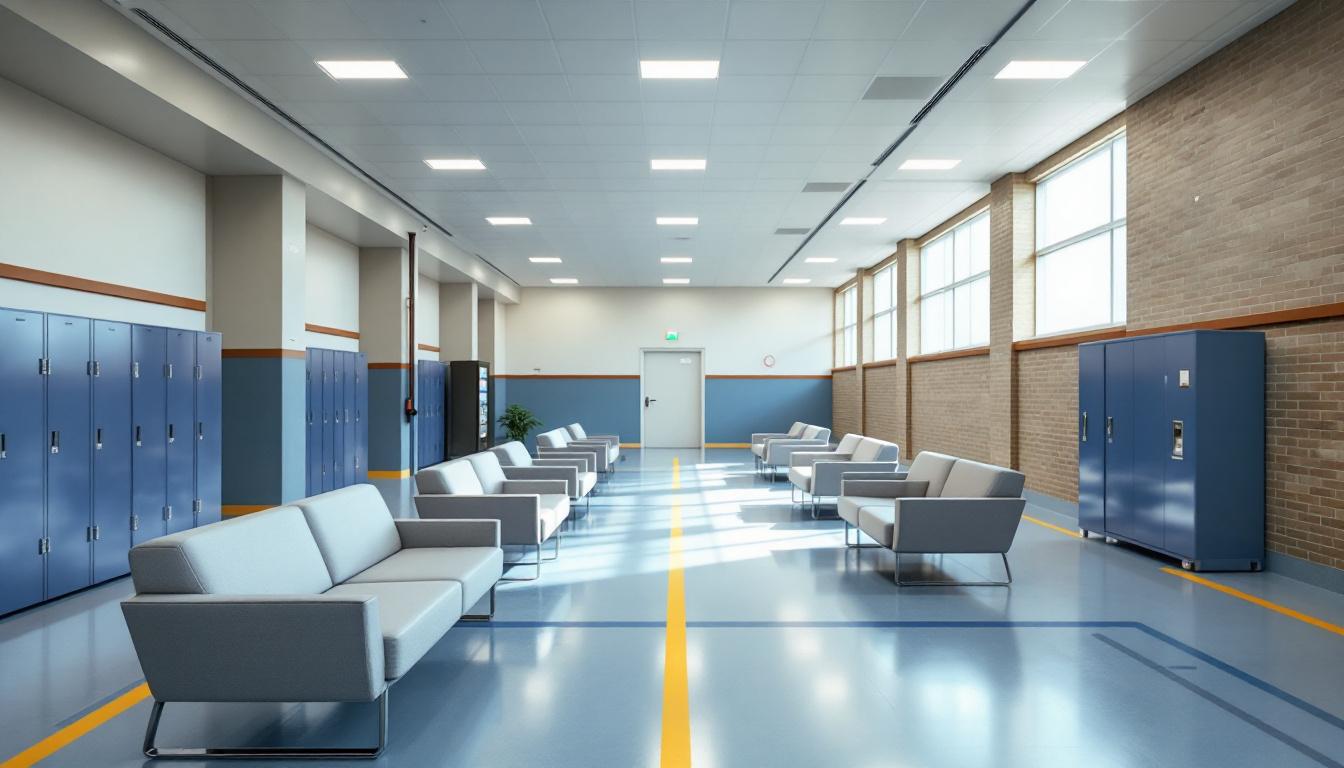
Structured routines now anchor each day with predictable patterns that residents follow from morning wake-up through evening count. The schedule typically includes designated times for meals, work assignments, educational programs, and recreational activities, with residents regularly moving between different areas of the facility according to established timeframes. Security procedures and controlled movement between housing units help maintain order while allowing residents to participate in various daily activities.
Housing arrangements at the facility generally consist of cells or dormitory-style accommodations where residents store their personal belongings and rest during designated hours. Living spaces typically include basic furnishings and may allow for some personal items purchased through the commissary system. Meals are usually served in dining areas at scheduled times, with residents following specific procedures for movement to and from these locations. Additionally, residents often have access to recreational opportunities that may include outdoor exercise periods, indoor activities, and access to library services when available.
Programming schedules deliver structure through work assignments that might include facility maintenance, food service, or other operational duties that help residents develop skills while contributing to daily operations. Educational and treatment programs typically operate on regular schedules, allowing residents to participate in various learning opportunities. While maintaining security protocols, the facility generally provides visitation opportunities and communication options such as phone calls and correspondence, enabling residents to maintain connections with family members and support systems in the community.
Ready to Connect?
Start communicating with your loved one today
Search for an Inmate
